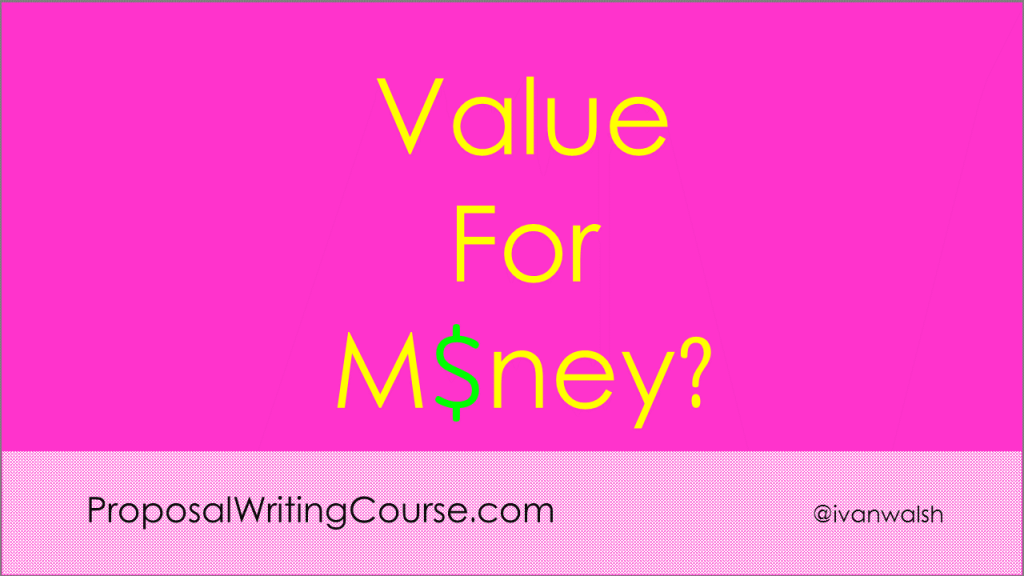You can increase your business proposal’s success rate if you understand how evaluators determine Value For Money. Most proposal writers focus on the solution or cost. While both of these are valid, you need to examine your bid from the evaluator’s standpoint, in particular how they assess the ‘true’ cost.
For example, the lowest bid does not always mean Value For Money.
Value For Money in Business Proposals
So, how do you determine Value For Money? There are two ways to examine this:
- Financial considerations
- Non-Financial considerations
Let’s look at each of these and see where and how this will affect our proposal development.
Financial Considerations – Value For Money
When evaluators look at your proposal, they’ll be assessing it with consideration to:
- Fixed price of the proposal
- Discounts on offer
- Conditions of these discounts
- Daily rates and if they may change
- Amount subcontracted to nominated subcontractors
- Financial capacity of subcontractors
- Total amount being tendered for
Non-Financial Considerations – Value For Money
The other area to consider is the non-financial considerations. This means that when I assess bids for clients, I’m going to:
- Check the assumptions upon which the price is based
- Assess if these assumptions are reasonable (especially where there are assumptions placed on my client)
- Review the expected resources and mandays required by my client
- Assess if we can provide this within the project timeframe
While these are not directly related to the total cost, you can see how they’d influence the agency awarding the contract.
For example, if the project goes over schedule – and daily rates increase – the project becomes very expensive.
Value For Money: How to Check
To protect the agency, I will then take a deeper look at the items in the bid; for example, clauses in the appendix which if executed could prove very costly.
For example:
- Check if bidders quantify needs, schedule, and dependencies.
- Check if resources are required on an “ongoing” basis.
- Review the proposed project program
- Assess if business units can keep up with the plan being proposed
- Will resource be available as required at the given dates in the plan?
- Identify project risks identified by the bidders.
- Consider the quality of their presentations, their team, and their responses raised to questions at presentations.
Value For Money: Final Assessment
The final step is to consider the following:
- Upfront payments requires before starting.
- Payment schedule i.e. do they invoice every month, deliverable or per input/output.
- Approach to change control, e.g. if the project goes over schedule how do they propose to manage this, their approach to costing, and the daily rates will they charge.
- How they will charge (penalize) if the agency cannot deliver at any point.
- Charges for attending meetings and/or travel expenses etc
- Charged for late delivery i.e. if they run over schedule and this impacts the parallel projects.
- Penalty points they may impose.
- Warranties in relation to support contracts.
- Change control requirements.
- Daily rates changes, i.e. will they revise their rates if additional work is required?
Conclusion
As you can see, from the agency’s point of view (i.e. the firm awarding the contract), there are many ways they can be exploited.
What this means for you, as the bidder, is to write your proposal so that you repeatedly demonstrate value for money. To do this, remove ambiguity from your bid – strive for transparency – and reduce the agency’s anxiety wherever possible.
The more you can demonstrate this, the more likely you are to be shortlisted.
What else would you add? How do you demonstrate Value For Money in your proposals?
